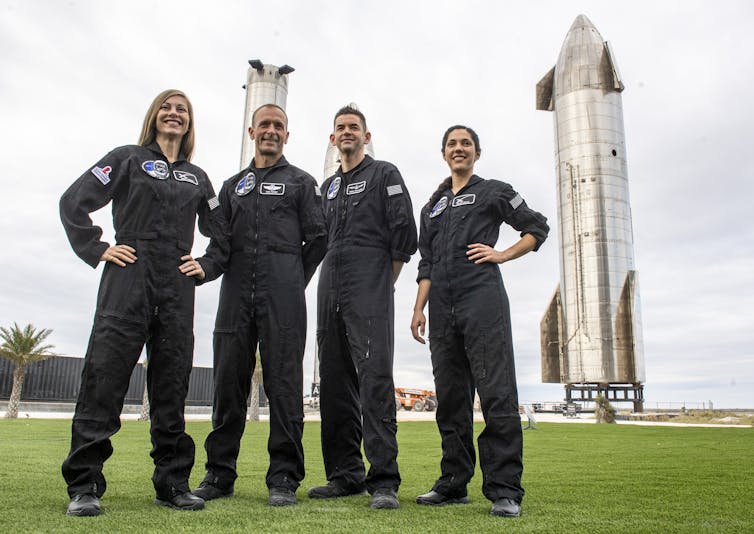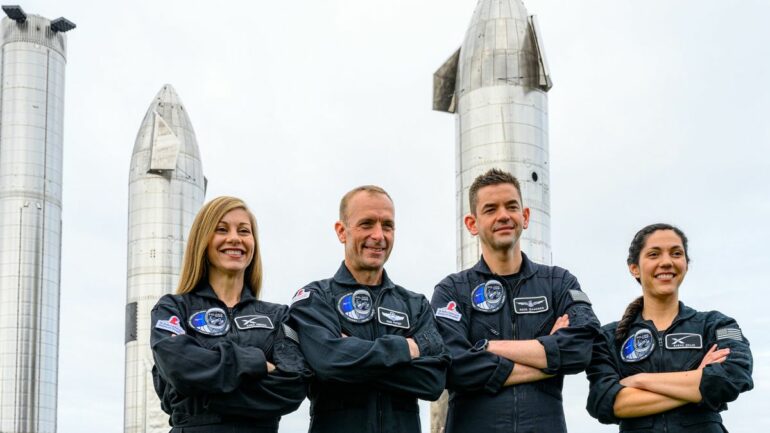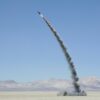SpaceX’s upcoming Polaris Dawn mission aims to be historic in more ways than one. Polaris Dawn plans to not only orbit Earth higher than any astronauts have in more than 50 years but to also feature the first private spacewalk.
It’s expected to launch Aug. 27, 2024, and feature a crew of four: the mission’s commander, Jared Isaacman; Scott Poteet, a 20-year Air Force veteran pilot; and SpaceX employees Anna Menon and Sarah Gillis. Launching on a Falcon 9 rocket, they will travel in a SpaceX Dragon capsule named Resilience.

The crew members of Polaris Dawn in Boca Chica, Texas.
Jonathan Newton/The Washington Post via Getty Images
As a space policy expert, I see this mission as a major step in the development of commercial spaceflight. If successful, this mission will show that private companies are working on developing the capabilities needed to go to the Moon or Mars.
Commercial spaceflight
Polaris Dawn’s time in space will be spent testing communications between it and Earth via Starlink satellites and completing almost 40 experiments. Many of these experiments will study how the human body reacts in low-gravity environments and measure the radiation the capsule receives.
But Polaris Dawn’s biggest task will be the first private spacewalk. The spacewalk will test out SpaceX’s new extravehicular activity, or EVA, suits and learn about how they function in the low-gravity environment of space.
Polaris Dawn is not the first commercial spaceflight mission SpaceX has launched. In addition to providing launch services to NASA, SpaceX also sells flights on its Falcon 9 rocket and Dragon crew capsule to individuals and companies.
SpaceX’s first commercial mission, Inspiration4, launched in 2021. It was led by Isaacman, Polaris Dawn’s commander.
Following that mission, Isaacman purchased three additional flights from SpaceX and worked with the company to start the Polaris program. While neither Isaacman nor SpaceX have released exact numbers, seats on the Dragon have sold previously for about US$55 million.
Polaris Dawn is just the first of three planned Polaris missions. While few details have been released about the second, the third mission will be the first launch of SpaceX’s Starship with humans on board.
High-flying orbit
Given SpaceX’s ambitions to conduct its own missions to the Moon and Mars, it will need to develop and test the many elements that such missions will require. It will need to design and test EVA suits, complete longer missions that mimic the time needed to get to places such as the Moon and demonstrate an ability to communicate with Earth.
Polaris Dawn’s high-flying orbit will send humans farther from Earth than they have been in more than 50 years.
At its peak, Polaris Dawn plans to reach an orbit of more than 850 miles (1367 kilometers) from Earth. That’s more than twice the distance between Earth and the International Space Station, which…



